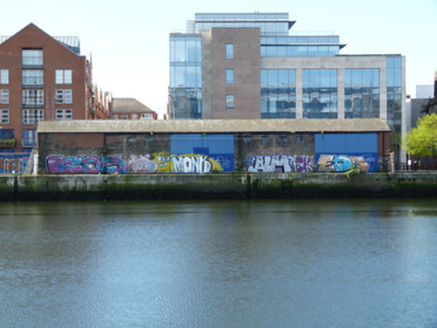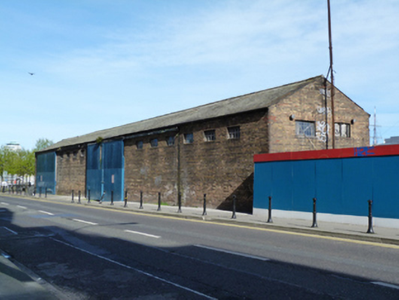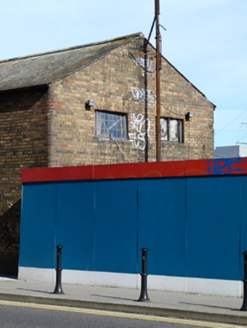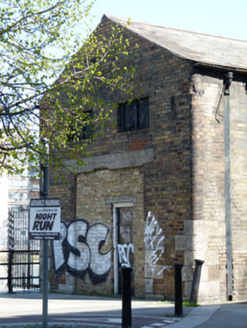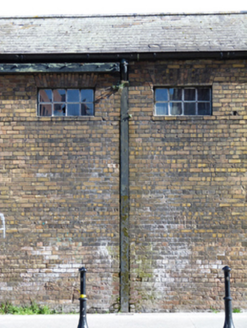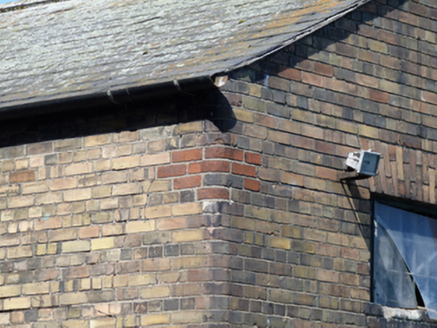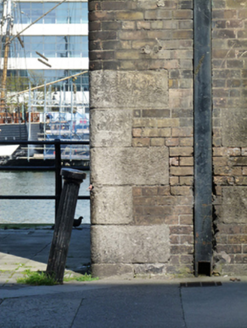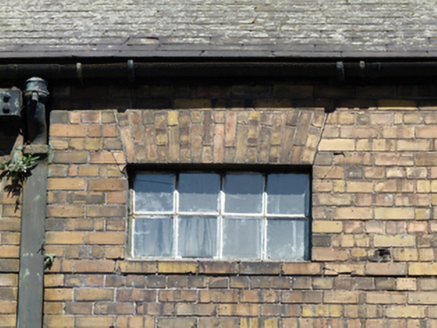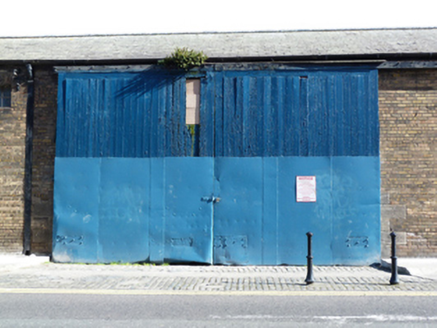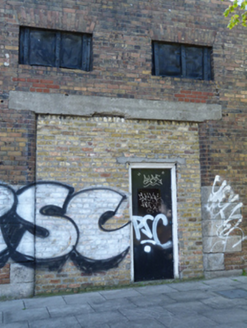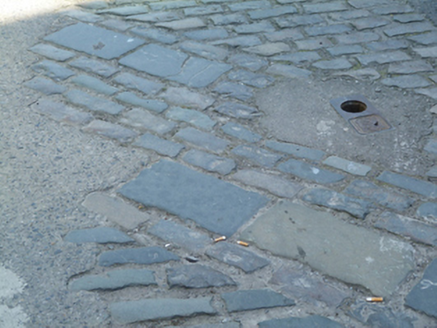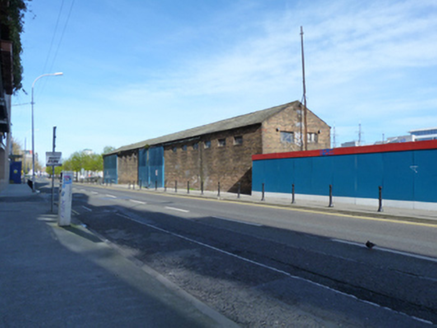Survey Data
Reg No
50020466
Rating
Regional
Categories of Special Interest
Architectural, Social
Previous Name
B.J.Marine
Original Use
Store/warehouse
Date
1870 - 1890
Coordinates
316929, 234337
Date Recorded
22/04/2015
Date Updated
--/--/--
Description
Detached five-bay double-height former warehouse, built c.1880, now disused. Pitched slate roof having cast-iron rainwater goods with flush square-profile cast-iron downpipes. Brown brick walls, laid in English garden wall bond having bull-nosed corners and ashlar granite quoins. Square-headed openings with cast-iron fixed pane windows. Square-headed door openings having bull-nosed brick and ashlar granite reveals, timber battened sliding doors with steel sheeting hung on cast-iron rollers to front (south) and rear (north) elevations. Square-headed opening having bull-nosed brick and ashlar granite reveals and render lintel, now infilled with brick, having recent square-headed door opening to west elevation. Stone setts and inset cast-iron rails to south. Located on campshire on Sir John Rogerson’s Quay.
Appraisal
A quay side warehouse on a different footprint is shown on a late nineteenth-century map, indicating that this warehouse postdates the rebuilding of the quay. Goods were unloaded directly ino itfor storage and it is recorded as a ‘landing store’ in the 1908-1915 electoral rolls. Ashlar granite dressings and quoins are well-executed, and lend colour and textural variation to the façade. Along with the quay walls, the adjoining warehouse to the east, and the diving bell, it is part of a significant group which adds to the city's maritime heritage. Sir John Rogerson’s Quay was laid out in the early part of the eighteenth century, on land owned since 1713 by John Rogerson, a member of the city council and Lord Mayor. It was the most ambitious of the privately funded eighteenth-century quay developments, running from Creighton Street towards Ringsend. The quay walls were rebuilt on two occasions, once in the 1820s, and subsequently in 1869 as part of the deepening of the channel along this part of the River Liffey.
